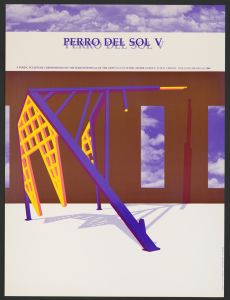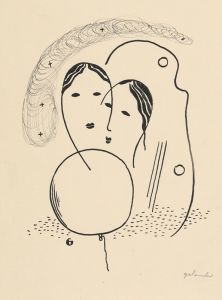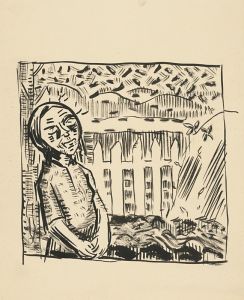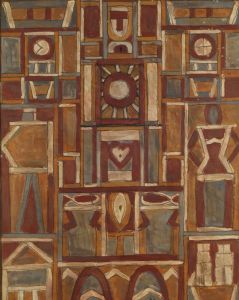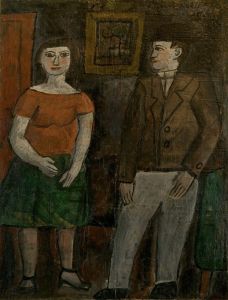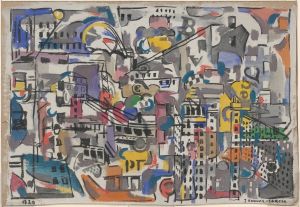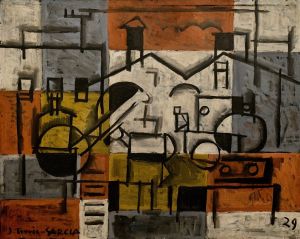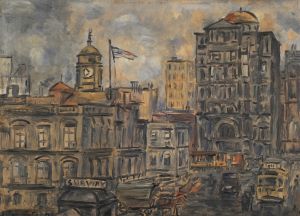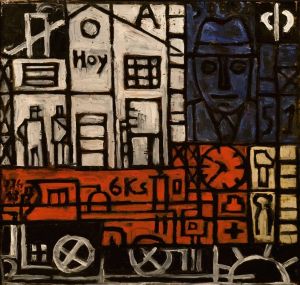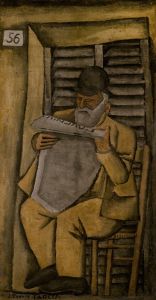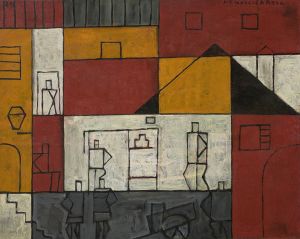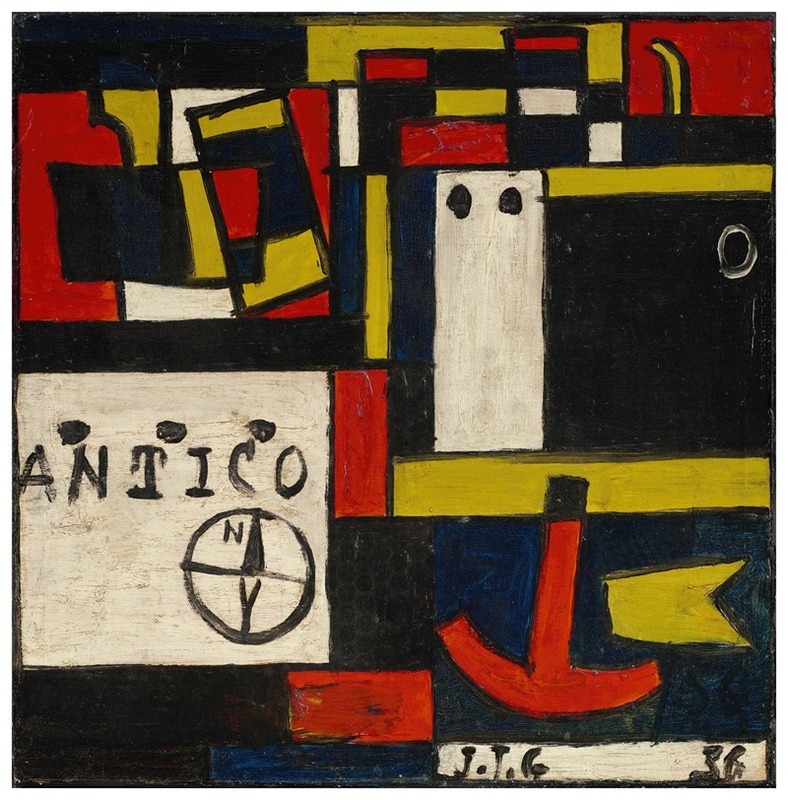
Transatlántico constructivo
A hand-painted replica of Joaquín Torres-García’s masterpiece Transatlántico constructivo, meticulously crafted by professional artists to capture the true essence of the original. Each piece is created with museum-quality canvas and rare mineral pigments, carefully painted by experienced artists with delicate brushstrokes and rich, layered colors to perfectly recreate the texture of the original artwork. Unlike machine-printed reproductions, this hand-painted version brings the painting to life, infused with the artist’s emotions and skill in every stroke. Whether for personal collection or home decoration, it instantly elevates the artistic atmosphere of any space.
Joaquín Torres-García was a prominent Uruguayan artist and theorist, known for his significant contributions to modern art in Latin America and beyond. One of his notable works is "Transatlántico constructivo," which exemplifies his unique approach to art that combines elements of Constructivism with a distinct Latin American sensibility.
"Transatlántico constructivo" is a painting that reflects Torres-García's commitment to creating a universal visual language that could transcend cultural and geographical boundaries. This work is part of his broader artistic philosophy known as "Universal Constructivism," which he developed after returning to Uruguay from Europe in the late 1920s. Universal Constructivism sought to integrate the rational, geometric principles of European Constructivism with the symbolic and spiritual elements of pre-Columbian art.
The painting itself is characterized by a grid-like structure, a hallmark of Torres-García's Constructivist style. Within this grid, various symbols and abstract forms are arranged, each carrying potential meanings that relate to his vision of a universal language. These symbols often include references to ancient cultures, such as Incan or Mayan motifs, as well as more universal symbols like the sun, moon, and stars. This synthesis of the modern and the ancient is a key feature of Torres-García's work, reflecting his belief in the continuity of human culture and the interconnectedness of all civilizations.
"Transatlántico constructivo" also reflects Torres-García's interest in the idea of the "transatlantic," which in his work often symbolizes the exchange and fusion of ideas between Europe and the Americas. This theme is particularly significant given Torres-García's own life, which was marked by extensive travel and cultural exchange. Born in Montevideo, Uruguay, in 1874, he spent significant periods of his life in Spain, France, and the United States, before returning to Uruguay. His experiences in these diverse cultural contexts deeply influenced his artistic vision and his desire to create art that could speak to a global audience.
The painting is executed with a restrained color palette, often using earthy tones that further emphasize the connection to ancient art forms. The use of simple, bold lines and shapes is intended to convey clarity and universality, allowing viewers from different backgrounds to engage with the work on multiple levels.
Torres-García's "Transatlántico constructivo" is not just a visual artwork but also a philosophical statement. It embodies his quest to find a balance between the modern and the traditional, the rational and the spiritual. Through this work, he invites viewers to consider the ways in which art can serve as a bridge between different cultures and epochs, fostering a deeper understanding of our shared human heritage.
Today, Joaquín Torres-García is celebrated as a pioneer of modern art in Latin America, and his works, including "Transatlántico constructivo," continue to be studied and admired for their innovative approach and profound cultural insights. His legacy lives on through the Fundación Torres-García in Montevideo, which preserves his work and promotes his artistic ideals.







